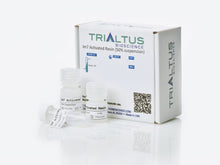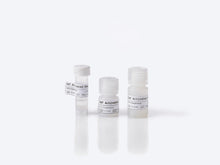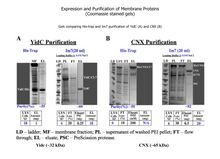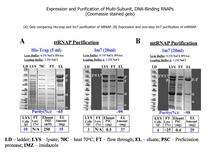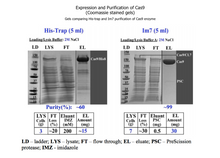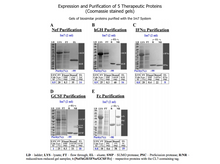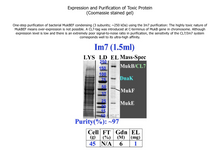
Product Discontinued.
Note: Im7 Resin will remain exclusively available for existing academic users upon request. Please provide us with advanced notice of your need.
The Im7 Resin contains a highly specific, resilient Im7 domain that binds the CL7 tag (~16 kDa) fused to target proteins. Following cleavage with the appropriate protease, the target protein releases from the Im7-bound CL7. Available in 1-, 2-, 5-, and 15-mL volumes of settled resin (50% suspension).
Resin upholds its effectiveness for multiple reactivations. TriAltus’ Im7 6B Resin retains a 1:1 molar binding ratio during repeated uses. The Im7 6B Resin has been used to purify a variety of proteins – including membrane and multisubunit proteins.
SIMPLICITY – In a single purification step, this protocol yields purified proteins that exhibit high yield, high purity, and a high activity level.
REUSABILITY – The Im7 6B resin is reusable with no observable loss in capacity.
RESILIENCY – The Im7 6B Resin retains a 1:1 molar binding ratio after multiple reactivations in a variety of conditions, including various salt and detergent concentrations.
How to choose between 4B and 6B resin
In general, the beads are the same size, but the higher the concentration of agarose, the more crosslinked, less porous, and stronger the resin is. 4B agarose will have less crosslinking and a larger pore size, but it will be more susceptible to compression. In our hands, Im7 4B resin has a higher capacity for our 40 kD test protein than 6B (~60 mg/mL vs ~40 mg/mL resin) and Cas9 (~12 mg/mL vs ~8 mg/mL). However, our smaller 1mL 4B FPLC column has a higher back pressure than the 1 mL 6B FPLC column and requires a slower flow rate
SPECIFICATIONS
BUFFER | 20 mM Tris-Cl pH 8.0, 0.5M NaCl, 5% glycerol, 0.05% sodium azide
PARTICLE SIZE | Crosslinked agarose 6B beads (45 – 165 μM)
PH STABILITY | The Im7 protein is stable on the beads at pH 3-10. However, CL7/Im7 binding is stable at pH 4.2 – 10 only.
SALT STABILITY | ≤ 4M NaCl tested
BINDING CAPACITY | 35-40 mg CL7/mL resin
STORAGE/SHIPPING CONCENTRATION | 50/50 buffer/resin slurry. 1-, 2-, 5-, and 15-mL of settled resin in 2, 4, 10, and 30 mL of slurry, respectively.
RECOMMENDED OPERATING TEMPERATURE | 4°C or room temperature
REACTIVATION DETAILS | To remove the CL7 protein and reactivate the resin, wash the column with Gdn-HCl, exchanging it into physiological buffer.
EXPIRATION | 12 months from receipt when stored as directed
SKU |
1 mL: 10-1060
2 mL: 10-1062
5 mL: 10-1065
15 mL: 10-1071
Additional information: Target protein characteristics (e.g., protein size, conformation, and concentration); flow rate (i.e., lower flow rates may increase the binding capacity); and other parameters (e.g., pH and temperature) can affect the column binding capacity. Protocols and data sheets are available for download under the Support tab.
Use of TriAltus products falls under our limited license agreement and is for non-profit research use only. For commercial use, please contact us for licensing.







